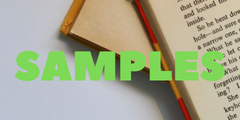The National Gallery of Art houses some of America’s most outstanding and talented artifacts. The Gallery houses thousands upon thousands, with approximately 4000 paintings. The Gallery has stunning paintings by American and European artist from as far back the Renaissance as today. I intend to take you figuratively into the Gallery and examine one of its most beautiful pieces through a variety if sources. The Crucifixion is by Paolo Veneziano.
Paolo Veneziano, however, is first. Veneziano can also be called Paolo Da Venezia. “In Paolo Veneziano’s later years, he had many associates, including his sons Luca, Giovanni, and it is hard to tell which pictures were created by him and which were done by his staff. Paolo Veneziano may be credited for several signed and dated paintings. Paolo’s style was based upon late Byzantine tradition. He is considered to be the founder and influence of the Venetian School. Many thought Paolo Veneziano was the most influential artist in the Fourteenth Century. This title was earned through his ownership of The Venetian School. Paolo was the younger brother and sister of two artists. His name, however, is what sticks with the public. His fame is evident in several commissions for the Venetian islands, the Bologna churches, and other important European cultural periods. Europe was witness to the “rebirth” of Europe’s cultural, artistic, political, and economic aspects. It began at mid-Middle Ages. The period of the Crucifixion lasted between 14th and 17th centuries. The dates of the Renaissance’s beginning and end dates vary depending on where you live. For example, the Renaissance in Italy began in 14 Century and continued until 17 Century. France’s Renaissance, however began in 15 century and ended around 17 century. Technically, the Crucifixion was not from the Renaissance era. It was made between 1340 and 1345. Fine Arts uses “Proto – Renaissance” as a term for artworks created prior to the Renaissance. It includes artworks made between 1300 and 1400.
Tempera on board was used to create the work. Tempera was used on panel during the Early Renaissance to create paintings on wooden paneling. Tempera refers to any pigment that has been mixed with a water-soluble binder such glair, egg white, gum arabic or animal adhesive. The resulting emulsion can then be thinned with some water and used with a brush. The paint was dried to hard matt after being carefully built up. This technique can be used with delicate colors and graceful lines. Tempera was more luminosity than fresco, but had less intensity and radiance than oil painting. However, it had one major drawback: It dried quickly, making it very difficult to blend tones. But Veneziano could handle painting through Tempura.
Since the Pagan Roman Empire, Jesus’ Crucifixion has been a popular theme in arts. Jesus’ death at the Crucifixion is the main story. Jesus is being tied or nailed to a wooden cross beam. Jesus is being nail here. This incident also takes place at Jerusalem’s city wall. Angels fly above Jesus to catch his blood. To the right, there’s a group of four women. Mary, mother and Jesus’s wife, is at Center. The women around her help her grieve. Mary Magdalene kneels below the cross. Mary Magdalene, a Jewish woman and one of his disciples, was there to witness his death. Next to the cross is a group of four men. A group of soldiers is also found beside the cross. Jesus will eventually die. Others will die from exhaustion or asphyxiation. It was a form cruel punishment that was well-known in Christianity.
Venezianos work has been identified by its Byzantine and Gothic Style influences, as previously mentioned. This particular work clearly shows the influence of both Byzantine as well as Gothic styles. This can be seen in Veneziano’s iconography choice and overall style. The National Gallery of Art does an excellent job of pointing out areas of influence. They say: “This panel, by example, shows Jesus’ Crucifixion happening before the Jerusalem crenellated walls. The skull of Adam is buried under the Golgotha rock, while angels fly to collect Christ’s blood. All these details can be found within Byzantine representations. The Western European depictions are responsible for the Mary Magdalene and the swooning Virgin. Paolo’s paintings are a blend of Byzantine icons and Western European depictions.
To me, this work is astonishingly small. This particular piece did not surprise me when I first saw it among the many other artworks in National Gallery of Art. The Saint Anne Altarpiece is located in the next room. The Saint Anne Altarpiece measures 92 15/16 by 29 13/16 inches. It is enormous and towers over me. The Crucifixion, which I tower over it, measures only 14 5/8 x17 7/8×2 1/4 inches. These sizes will tell us where the pieces were located. Because of its enormous presence, the Saint Anne Altarpiece could have been placed on a high altar in Church. It is too small to be displayed on the altar and have impact. Many altarpieces were used to create paintings such as The Crucifixion hundreds of years ago. This is the actual top of a portable Triptych. The original design of this painting had an arched roof. However, you can see the contour in the gilding. This shows that the corner were later added to the panel to create a rectangle. These changes are a reminder that early Italian paintings were not treated the same way as modern museum-goers.
Art can be meaningful. Art can express words that are difficult to hear. It is the job and responsibility of artists to help overcome these barriers. Paolo Veneziano was a genius artist who fought for the arts with a tsunami of creativity. His legacy should be preserved and I believe the best way is to educate ourselves about his works. Art will never stop evolving. It is our duty to recall the beginnings and see all that has gone into future art.



